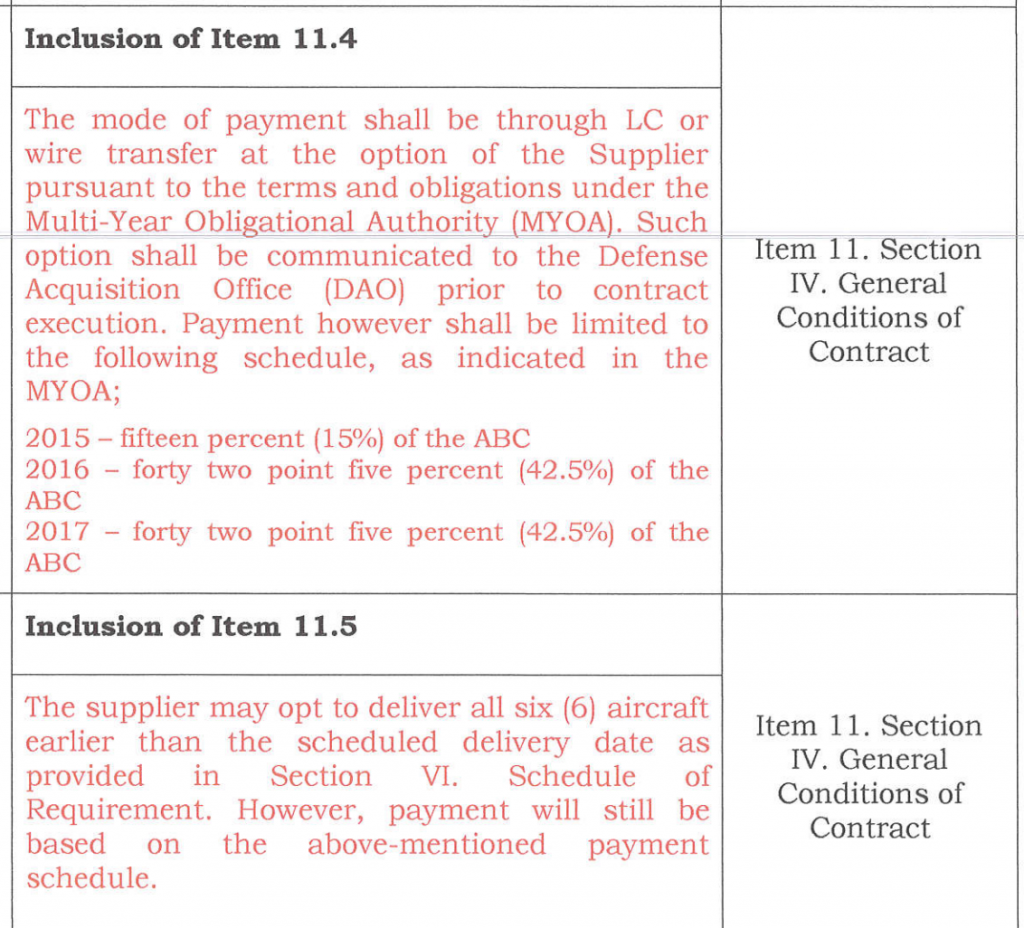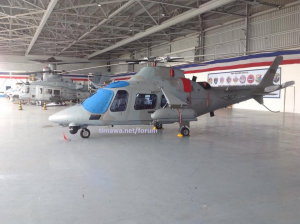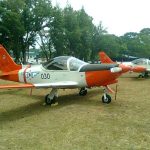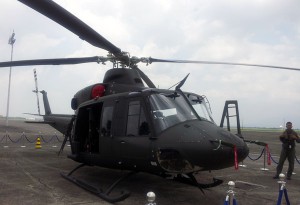Our apologies for the haitus. The remainder of site functionality will be restored.
Author Archives: adroth
“Being right” is not a popularity contest
A well-reasoned, thoroughly researched, idea is not “proven wrong” by merely saying “many people disagree with it”. While popularity shows how many people share an opinion, numbers alone don’t prove that that opinion was actually correct in the first place. It could very well show how many people “just don’t get it”.
Service bulletin: New board about US affairs
To consolidate discussions about the United States of America, from military affairs to domestic events that have a bearing on US-PH relations, the following new board has been created on the DRP forum:
http://defenseph.net/drp/index.php?board=49.0
Existing discussions will be migrated to this new board in the coming weeks. All future postings will be organized accordingly.

Service bulletin: Database maintenance
The forum will be down for a few hours for database and forum software maintenance.
The DND’s P25B “credit card” for the AFP Modernization Program
The Department of Budget & Management released the official AFP Modernization Budget for 2018: P25B. This represents a fraction of the total DND budget of P149.7B — which includes everything from salaries, to veterans pension payments, to operational expenses that keep aircraft flying, ships sailing, and guns firing.
When evaluating whether or not the P25B modernization budget is sufficient to cover the various pending and ongoing acquisition projects of the AFP (see here), one must first recall a little understood — but game-changing development — known as the Multi-Year Obligational Authority (MYOA) that was first implemented in the latter half of 2010. (See here).
The MYOA was first used for the aborted Arroyo-era Multi-Role Vessel (MRV), which was then rebranded in the Aquino administration as the “Strategic Support Vessel” (re-using the name of the another Arroyo-era project that was originally based on a second-hand Japanese RO-RO vessel that eventually went nowhere). Since then, the MYOAs have been used for projects such as the Long Range Patrol Aircraft and the Close Air Support Aircraft.
The MYOA is significant because it unshackles the AFP from the limits of the national budget. It does so by using a simple concept that the average Filipino — who has ever made large consumer purchase (e.g., a car, a house, a refrigerator, or even a karaoke machine) — uses to buy what he or she needs while staying within the constraints of the household budget: “payments by installment”. The MYOA is essentially a credit card for the department that uses it — to include the DND.
Consider for the example the Close Air Support Aircraft project which is valued at 4,968,000,000. The MYOA document for the project actually breaks the project into the following annual installments: Year 1: 15%, Year 2: 42.5%, Year 3: 42.5%.
 |
While the original breakdown was pegged in 2016, and the actual contract signing didn’t take place till 2 year after, the breakdown formula shown above is comparable to how other projects were calculated, such as the still-pending Long Range Patrol Aircraft project.
Therefore for the first year, the funds required for the CASA project will only be approximately P754M. When applied the P25B annual budget, this would still leave P24.3B for other purchases.
If other projects also use the MYOA concept for their purchases . . .
. . . then instead of looking at the total Authorized Budgets for Contract of each purchase as the total the DND needs each year as its budget
. . . one only need to look at the percentage of the initial installment as the budgetary requirement for each year.
Furthermore modernization funds are NOT actually just limited to the General Appropriations Act. As per Section 6 of the Revised AFP Modernization Program, funds for the acquisition of AFP equipment is actually drawn from the AFP Modernization Trust Fund (AFPMTF). The AFPMTF sources funds from the following sources:
- The National Budget, particularly appropriations for the AFP Modernization
- Income from the Government Arsenal (once it being production for export)
- Sale of DND property
- Income from Public-Private partnerships
- Sale of excess defense articles and other uneconomically repairable equipment
- Funds from budgetary surplus
- Donations from local and foreign sources (this is how the AFP gets funding from Malampaya)
In summary, the MYOA facility, and the flexible funding nature of the AFP Modernization Trust Fund means that the size of AFP Modernization budget is does not actually limit what the AFP can do, as it did in the years before 2010. Even if the AFP were limited to the national budget as its source of funding, the P25B allocation — if done right — would simply represent the installment payment for that year. Thus, there remains much cause for optimism in the coming year, and the years ahead.
The Philippine Navy ship database is back
A major milestone in the forum rebuilding process (see Rebuilding a cyber-institution) has been reached. The Philippine Navy ship database, the single most comprehensive online collection of information about Philippine Navy ships — both past and present — is back.
 |
The return of the database also brings back one of the most, if not THE most, comprehensive photographic record of Philippine Navy vessels currently available on defense social media. Over the years, numerous community shipspotters have sent many photos specifically for use on the original index. These images have found a home in the DefensePH database.
Photos in this collection include this iconic photograph of BRP Andres Bonifacio crossing the Golden Gate Bridge in San Francisco.
 |
The thread index currently brings together 145 discussions and is divided into the following sections:
- Main
- Decommissioned, strategic reserve, grounded
- Scrapped, sunk, sold, etc.
Main
Visitors to the index are brought to this section first. Threads here draw attention to everything from the largest combat vessels in Philippine Navy history — the Tarlac class Strategic Support Vessels — to lesser known vessels such as the ADFL-1 class Floating Drydock. From the historic Rajah Humabon which saw action in WWII, to the freshly minted Multi-Purpose Assault Crafts which are not only the youngest vessels in the fleet but also among the fastest.
Consistent with practices of other established public naval references, the operational condition of these vessels are not considered in section assignment. Given the average age the fleet, it is understandable that a number may actually not even be able to get underway, or at least get underway safely. Food for thought for avid followers of online databases that tout numbers of ships with no regard for the state of those ships.
Decommissioned, strategic reserve, grounded
These are vessels that remain in the vessel registry but are no longer in active status. Some are eventually destined to be scrapped. Others are kept as part of the strategic reserve and preserved awaiting reactivation at some future date.
Solely for purposes of this index, vessels that were grounded, and then left in place are placed here to acknowledge their unusual circumstances. One such vessel is BRP Lanao del Norte (LT-504) an ex-US LST-542 class Landing Ship Tank (LST) which ran aground off Pagasa. It’s thread shows the progression from what it looked like in US service to its current scrapped state.
BRP Sierra Madre, another LST-542 class vessel that ran aground at Ayungin shoal and currently serves as outpost monitoring Chinese activities in Mischief Reef, is also a prominent feature of this section. The forum discussion for this boat not only shows the most recent, Philippine Navy authorized, imagery of the vessel, but also shows what it looked like when it was still known as USS Harnett County. Given the vessel’s importance to national defense, this thread is updated as often as forum administrators are allowed.
 |
Scrapped, sunk, sold, etc
This section dwells on ships that were once part of the Philippine Navy, but have since been completely taken off the registry. It a historical record of the fleet that was.
Among the ships in this category are several notable vessels that were lost in typhoons:
RPS Datu Kalantiaw (PS-76). An ex-US Cannon class Destroyer Escort which was lost during Typhoon Rubing (Int’l: Clara) while at anchor off Calayan Island on September 22, 1981. A retired PN officer (aldebaran@timawa/defenseph) described it as one of the worst naval tragedies in Philippine Navy history.
RPS Rajah Soliman (D-66). An ex-US Buckley class Destroyer escort lost to Typhoon Dading while at anchor at the Bataan National Shipyard.
The rebuilding process and beyond
The rebuilding process for this thread actually began on September 25, 2016. Fifteen days after the original Timawa forum was unceremoniously shutdown by its owner. The DefensePH forum itself was established on September 22, but thread index rebuilding didn’t start till 3 days after. The ship database was the first such index created as it was one of the lynchpins of the original community.
Although additional ship discussions have been added to the current thread index since the original Timawa equivalent, a number of mysteries from the Timawa thread remain. Ex-US SC-497 Submarine Chaser class in PN service are an example. Research on those outstanding items continue.
While mindful of the Navy’s past, the index also looks to the future. The DND recently issued instructions for the implementation of the contract with Hyundai Heavy Industries (HHI) — a South Korean shipbuilder — for the construction of a pair of frigates which are meant to be the most capable vessels in the fleet. In acknowledgement of this development, threads for each of these ships, which HHI reportedly refers to as P159 and P160, are all new additions to the index. As the Navy charts its own course to the future, the forum too continues to grow in content and coverage.
Rocket motors, ejection seats, and other spares for S211
Philippine Air Force is in the process acquiring P50,850,000.00 worth of rocket motors, ejection seats, and various spares for its S211 aircraft. Details for each bid invitation appears below.
All four Pre-Bid Conference were scheduled on April 21, 2017 at 1:00 PM PAF Procurement Center Conference Room, Villamor Air Base, Pasay City. The actual opening of the bids is set for May 5, 2017 at 9:00 AM PAF Procurement Center Conference Room, Villamor Air Base, Pasay City
| PB-PAFBAC-195-17 Procurement of Spares and Services for the Repair and Overhaul of S-211 Aircraft Components | Approved Budget for the Contract (ABC): Php3,850,000.00 Price of Bid Documents: Php5,000.00 |
https://philgeps.gov.ph/GEPSNONPILOT/Tender/SplashBidNoticeAbstractUI.aspx?menuIndex=3&refID=4464811&DirectFrom=OpenOpp&Type=agency&BusCatID=0 | |||
| PB-PAFBAC-192-17 Procurement of Rocket Motors for Use of S-211 Aircraft | Approved Budget for the Contract (ABC): Php8,000,000.00 Price of Bid Documents: Php10,000.00 |
https://philgeps.gov.ph/GEPSNONPILOT/Tender/SplashBidNoticeAbstractUI.aspx?menuIndex=3&refID=4464794&DirectFrom=OpenOpp&Type=agency&BusCatID=0 | |||
| PB-PAFBAC-194-17 Procurement of Services for the Repair/Overhaul of two (2) prs of Ejection Seats (F/R) for use of S-211 Aircraft | Approved Budget for the Contract (ABC): Php9,000,000.00 Price of Bid Documents: Php10,000.00 |
https://philgeps.gov.ph/GEPSNONPILOT/Tender/SplashBidNoticeAbstractUI.aspx?menuIndex=3&refID=4464794&DirectFrom=OpenOpp&Type=agency&BusCatID=0 | |||
| PB-PAFBAC-193-17 Procurement of Spares and Services for the Repair and Overhaul of Engine (JT15D-4C) for Use of S-211 Aircraft | Approved Budget for the Contract (ABC): Php30,000,000.00 Price of Bid Documents: Php25,000.00 |
https://philgeps.gov.ph/GEPSNONPILOT/Tender/SplashBidNoticeAbstractUI.aspx?menuIndex=3&refID=4464693&DirectFrom=OpenOpp&Type=agency&BusCatID=0 |
Scarborough this week: Chinese cutters and fishing vessels
In an effort to highlight the both the value and limits of Vessel Traffic Management Systems (VTMS) to maritime domain awareness, the following thread was created on the DefensePH forum: Who are the people in the neighborhood. The intent for the thread was to post data obtained from various free vessel traffic monitoring Websites that draw information from Automatic Identification System (AIS) services around the world. All screen captures presented in this article come from Marinetraffic.com.
This idea is not new. In fact, there was at least one Philippine FB group that focused on collecting AIS data with the end goal of collecting maritime intelligence. While noteworthy, the idea was hobbled by the fact the free AIS data is notoriously unreliable. While freely available AIS can indicate the presence of a ship, the absence of visible ships is not definitive indicator that no ships are actually present — making it ultimately meaningless as in a security context. Furthermore, identity information contained within AIS reports is not tamper proof. According to Windward, a maritime domain awareness company, 1% of all AIS data is actually faked.
Nevertheless, despite its limitations, AIS-data-watching was a potentially fun community activity to which any DefensePH forum member could contribute. So in keeping with the forum’s long-standing goal of promoting roll-up-your-sleeves-and-do-something-patriotism, the thread was rolled out as project on Valentine’s Day, 2017.
Note: For OPSEC purposes, Philippine government vessels are excluded from this thread.
The first activity was to scour major ports for interesting ship-spotting opportunities. Perusal of AIS data in Subic Bay, for example, detected the presence of an outgoing US Navy replenishment vessel that was on the way to East Jahor.
 |
What was not expected, was that Scarborough / Panatag / Bajo Masinloc was actually generating AIS data. Chinese vessels — either deliberately or unintentionally — were announcing their presence in the shoal.
The first vessel detected in the initial inspection was China Coast Guard cutter #3175, a 78-meter member of Shuke II class of cutters.
 |
Exactly how long the vessel had been on station is unclear as the AIS time stamp only refers to the last update event. At that point, the ship had been on station at least 6 hours. It remains in the shoal as of writing.
Not long the initial find, Yu Zheng 312 broadcasted its presence. This 101-meter, 4,590 ton, ship used to be a tanker in the PLA Navy, designated Dongyou 621. It was converted into a fishery patrol vessel and recommissioned in 2013 — becoming the largest member of the fleet at the time.
 |
The photo below shows the vessel on its maiden voyage in its fishery patrol role. Photo c/o China Daily.
 |
The week ended with the detection of three addition vessels in the shoal. AIS data indicated that two were fishing boats designated Qiongsanshay U00313 and Qiongsanshay U00110. No additional validation of this identity was available as of writing.
The third vessel, however, was another coast guard cutter: #3304x. Interestingly, this contact illustrated the imperfection of AIS-based identification as the full number of the vessel was unavailable. It was presumably a member of the Hongming class cutter, a 42-meter vessel.
 |
The presence of these assets in the the shoal demonstrates China’s continued resolve to impose its regulatory controls over the shoal despite their defeat at an UNCLOS tribunal that ruled that their 9-dashed-line claim had no basis in international law.
Chinese patrol vessels within the confines of this shoal came to the forefront of Philippine national consciousness in 2012 when these prevented Filipino fishermen from accessing their traditional fishing ground as part of China’s reinvigorated their efforts to enforce the 9-dashed line claim mentioned above. This resulted in encounters between Philippine and Chinese coast guard ships like the following.
In October 2016, the Duterte administration brokered an agreement with China to allow Philippine fishing boats back to the shoal while side-stepping the matter of exclusive access granted the Philippines by UNCLOS. (See Duterte said he told Chinese: Scarborough is ours). Provided this unfettered access remains, the mere presence of Chinese vessels merely serves as a reminder of PH-CN tensions, and not an indication of another 2012-style escalation.
The price of freedom: P700M to keep aircraft in the air
Sacrifice and blood are the currency of freedom. However, a pre-requisite for use of that human currency is treasure. The tools that allow the AFP to perform their duty must be kept in good working order. That requires money, and as the number and capability of AFP equipment goes, so does the need for a financial commitment to defense.
This article spotlights the operational expenses the Philippine Air Force is looking to spend on its aircraft in February 2017. According to postings on PhilGEPS, a total of P699.3M were slated for aircraft maintenance projects ranging from the acquisition of spares for air-frames or engines, to repair of support equipment assigned to specific aircraft. This is broken down as follows:
| KAI FA-50PH | This Lead-In Fighter Trainer / Surface Attack Aircraft is the most sophisticated combat aircraft in the PAF inventory. Four acquisition projects for this aircraft have a total value of P140.2M. See here for details |  |
||
| AgustaWestland AW-109AH | Acquired after multiple failed acquisition projects dating back to 2006, the AW-109 is the first night-capable attack helicopters in the PAF. Three acquisition projects for this aircraft have a total value of P48.526M. See here for details |  |
||
| MD-520 | Acquired as part of the first AFP modernization program, these gunships have been providing close air support to AFP ground troops since the late 90s. Two acquisition projects for this aircraft have a combined value of P23.6M. See here for details |  |
||
| Aero TC-690 Commander | This is a special-use for which the PAF has is a solitary maintenance project valued at P10.4M. See here for details. | |||
| Fokker F-27 Friendship | Four maintenance projects for these long-serving troop transports had a total value of P86.4M. See here for details. |  |
||
| GAF N-22 Nomad | This project covered the spares and maintenance costs for three N-22s, valued at P17.43M. See here for details |  |
||
| Siai-Marchetti SF-260 | Overhaul and repair of the propeller assembly of aircraft resulted in a P2.63M project. See here for details |  |
||
| Bell UH-1 | The largest fleet of any aircraft type in the PAF understandably results in the largest maintenance budget of any aircraft in this list. Projects totalled P200.9M. See here for details |  |
||
| Bell 412 | Communication equipment maintenance and inspections for this aircraft resulted in two projects with a combined value of P59.2M. See here for details |  |
||
| Lycoming T-53-L-13B | These three maintenance projects were specifically for engines used by specific UH-1/Bell 204 models in the PAF inventory. Total project cost is P102M. See here for details | |||
| Aerospace Ground Equipment | These are projects for undisclosed ground support equipment, valued at P7.9M. See here for details |
Such is the price of freedom. As the AFP acquire increasing number of aircraft with greater capability, these costs will continue to grow. When full-spectrum air defense capabilities are realized, this value can only go up. Hence the need to inculcate in the minds of the average Filipino that defense is an investment, not an expense.
This discussion is also available on the DefensePH.net forum here: http://defenseph.net/drp/index.php?topic=1165.0
Service bulletin: Capacity issue
We are currently experiencing elevated traffic. Checking with hosting provider to see needs to be done.
Backing up discussions as a precaution.
